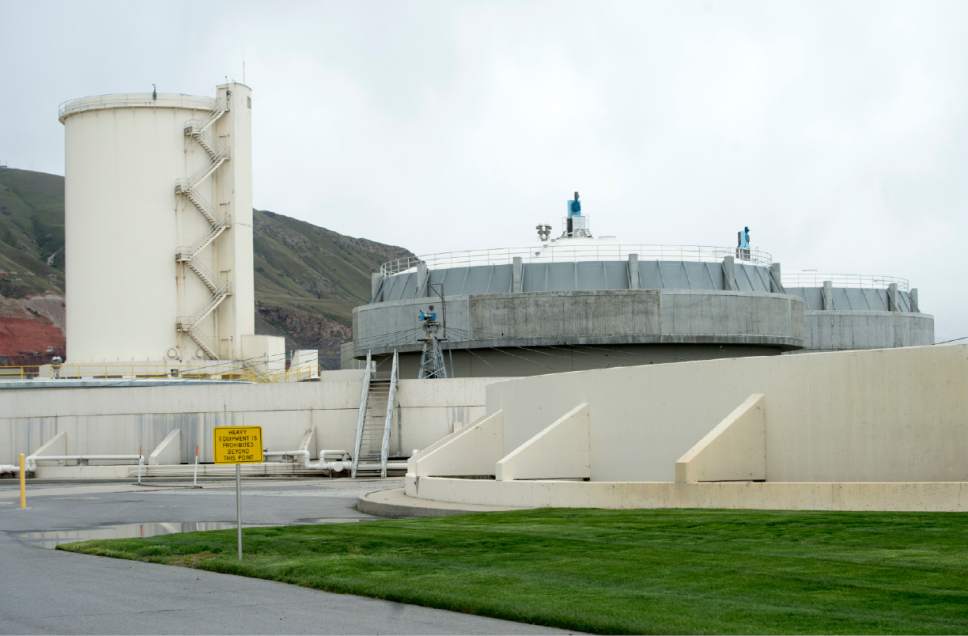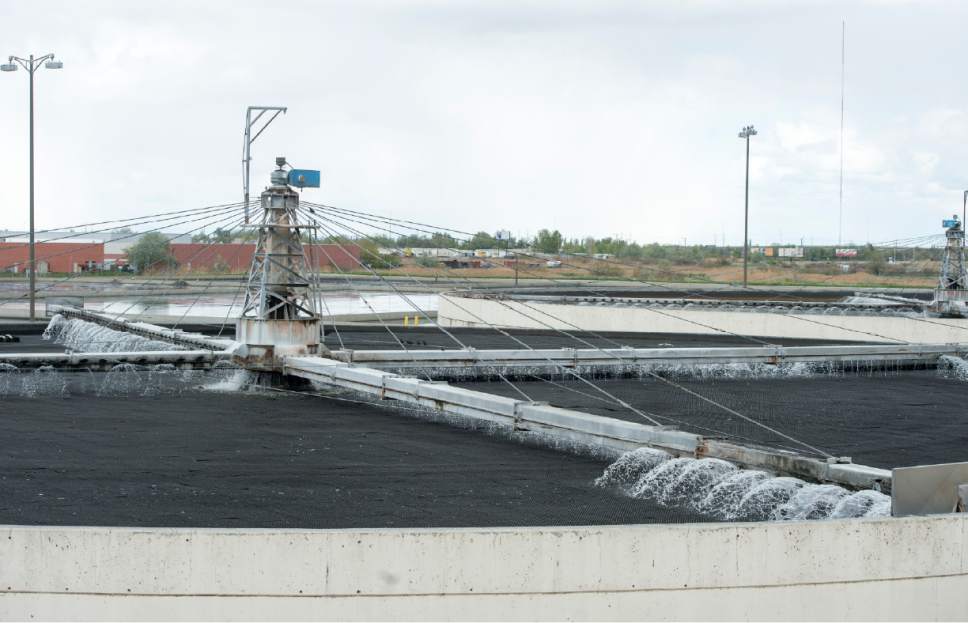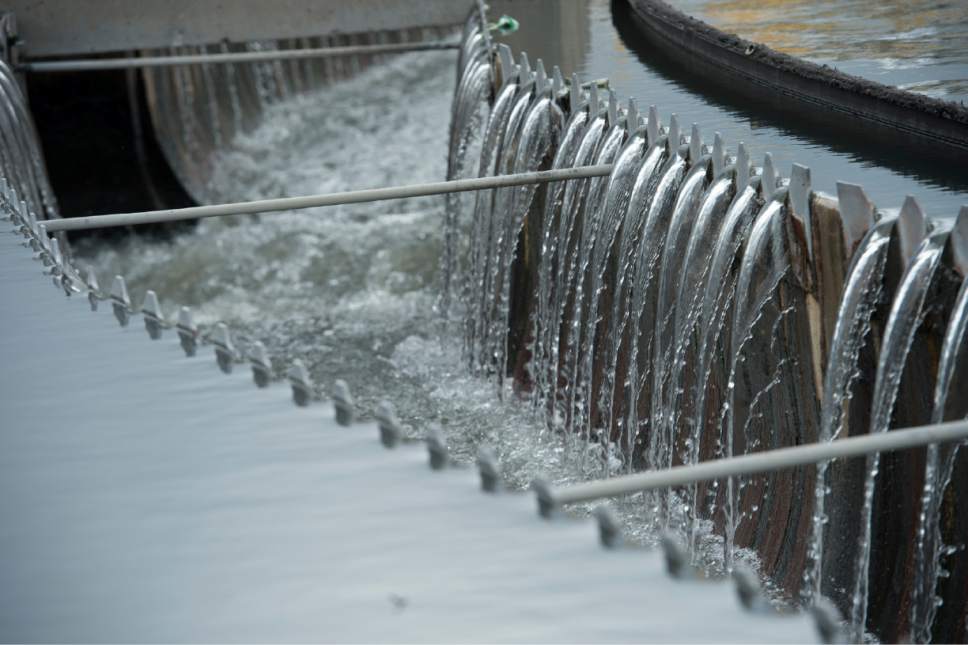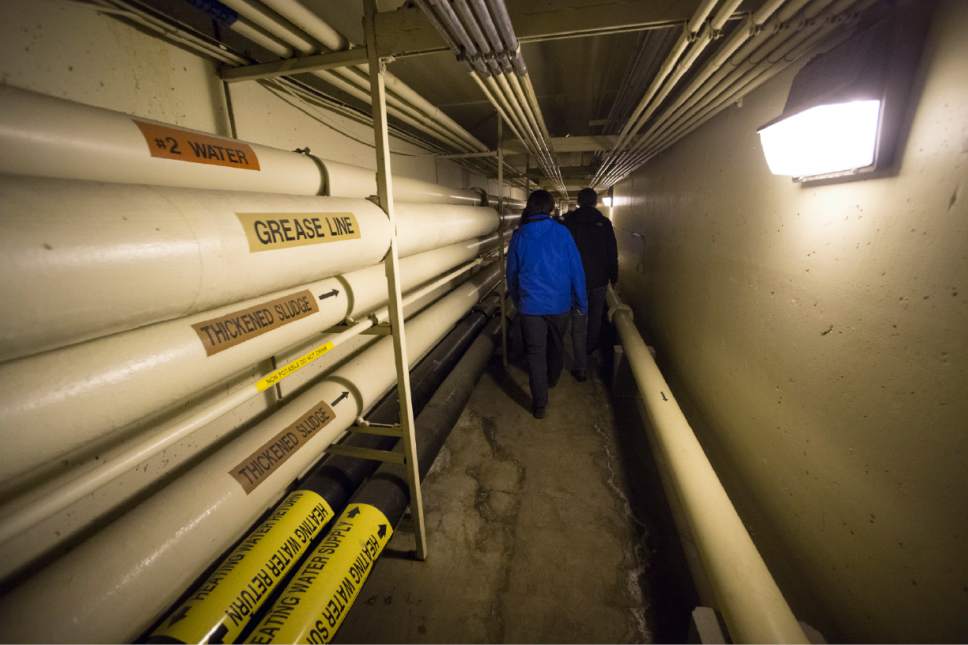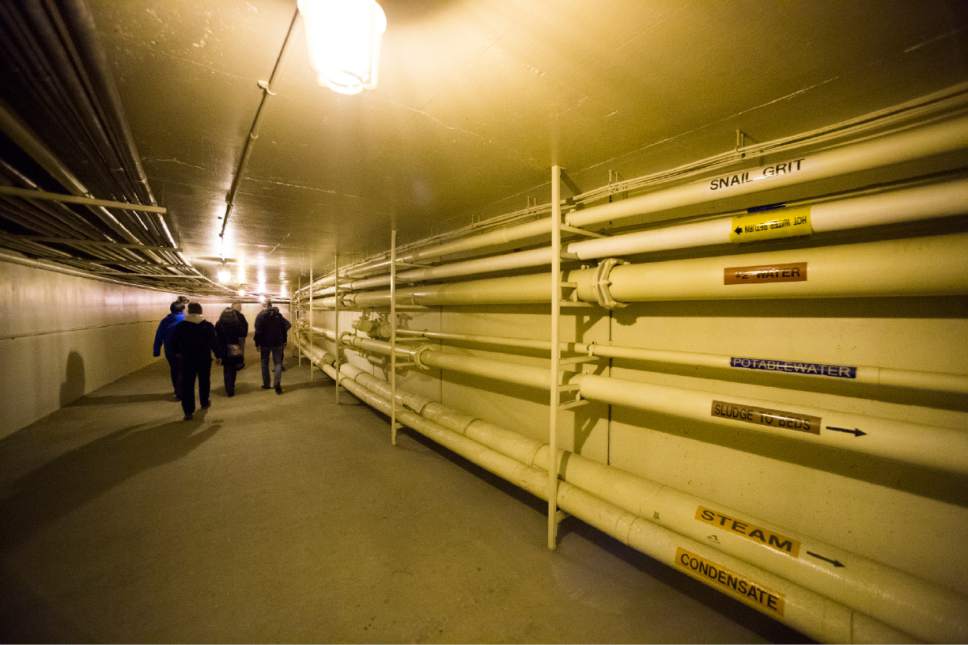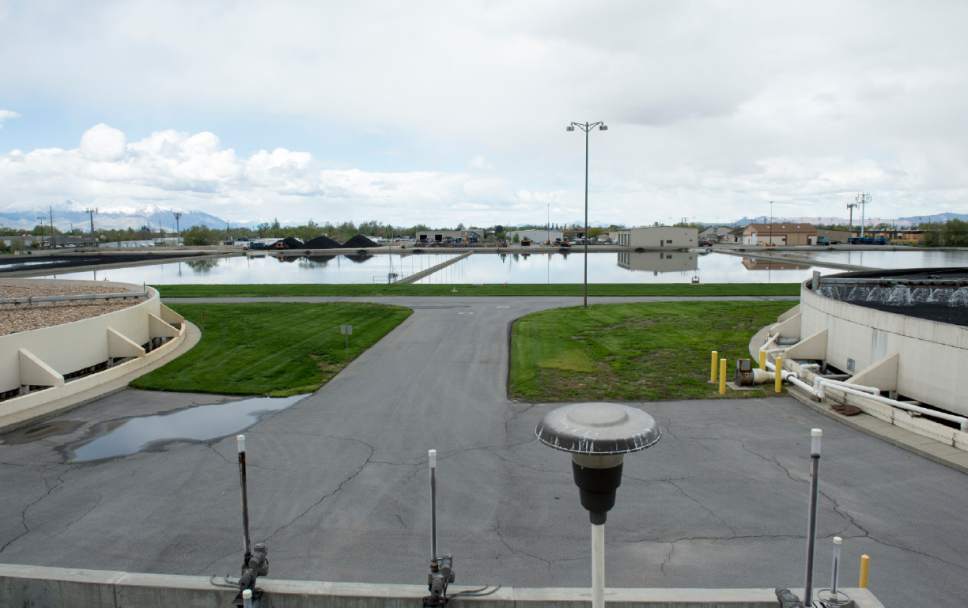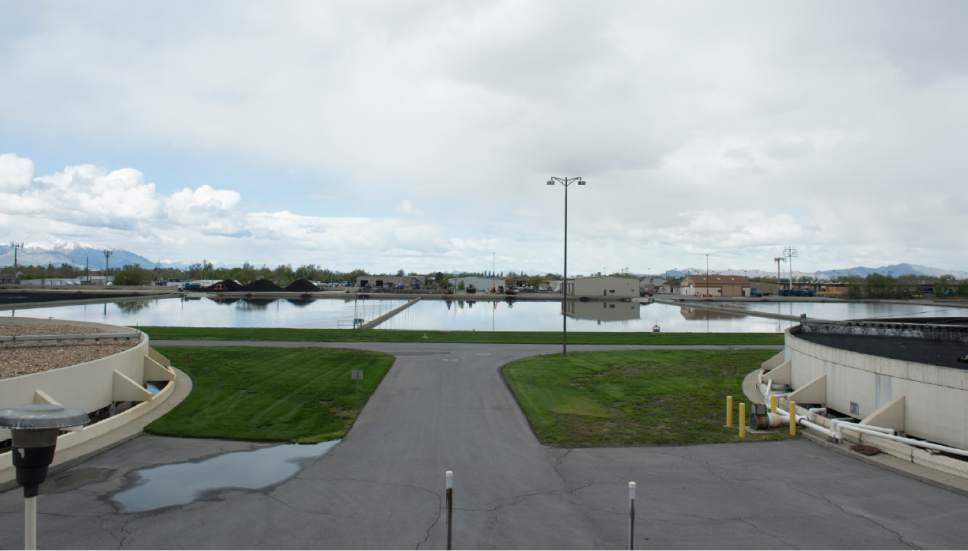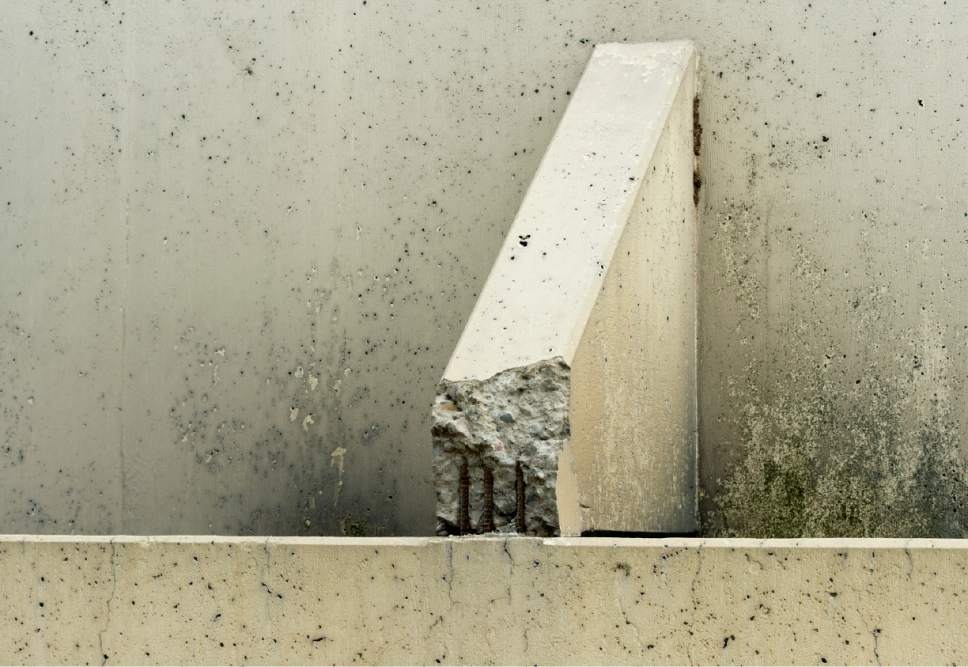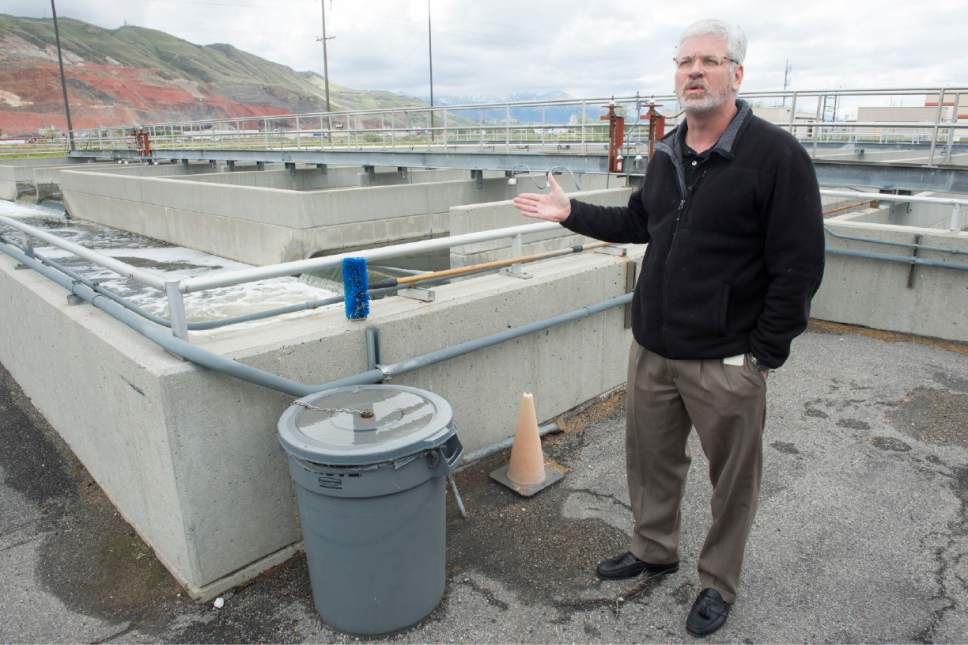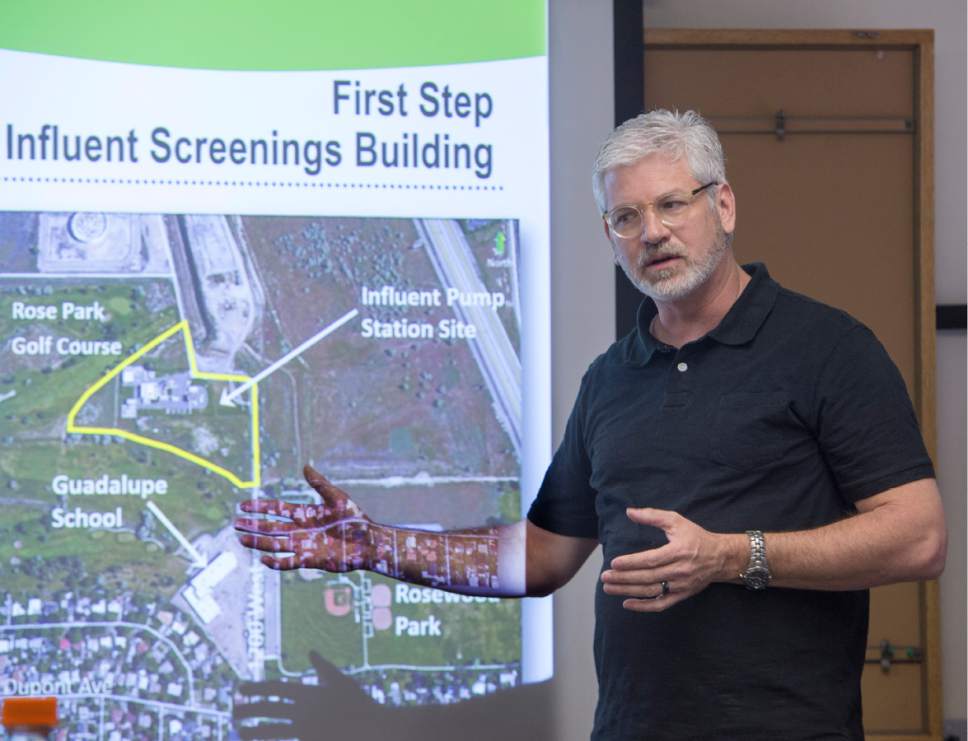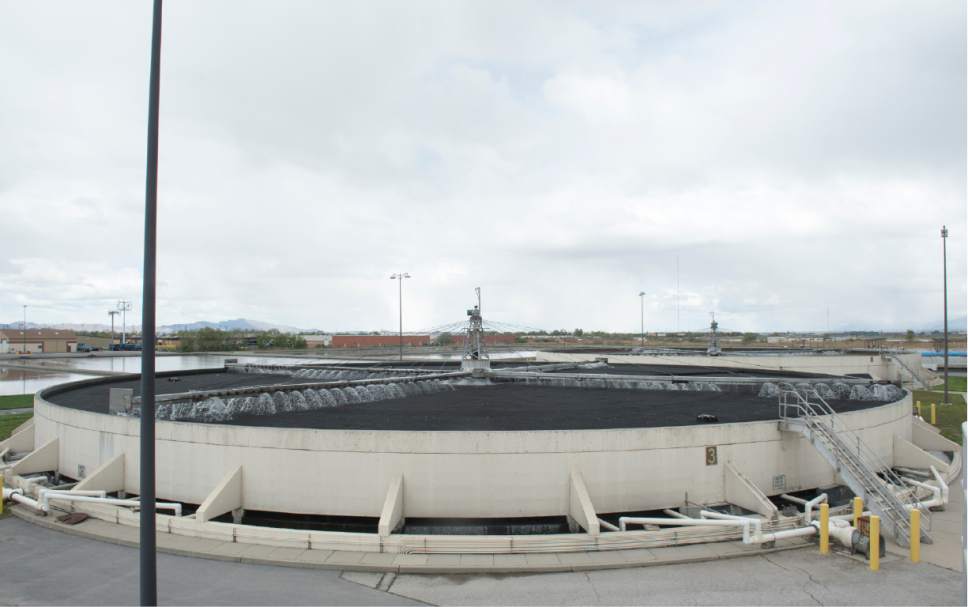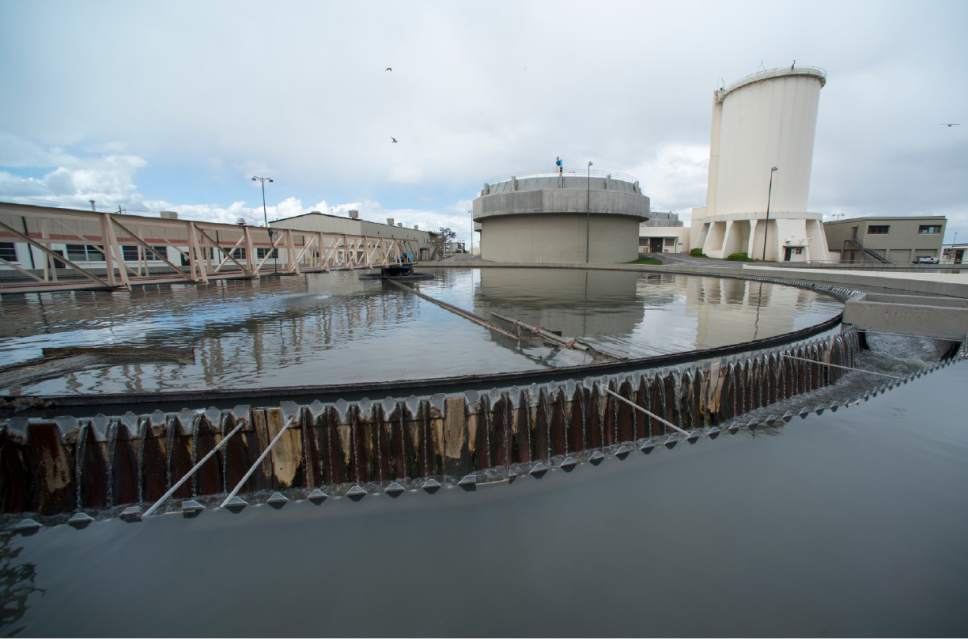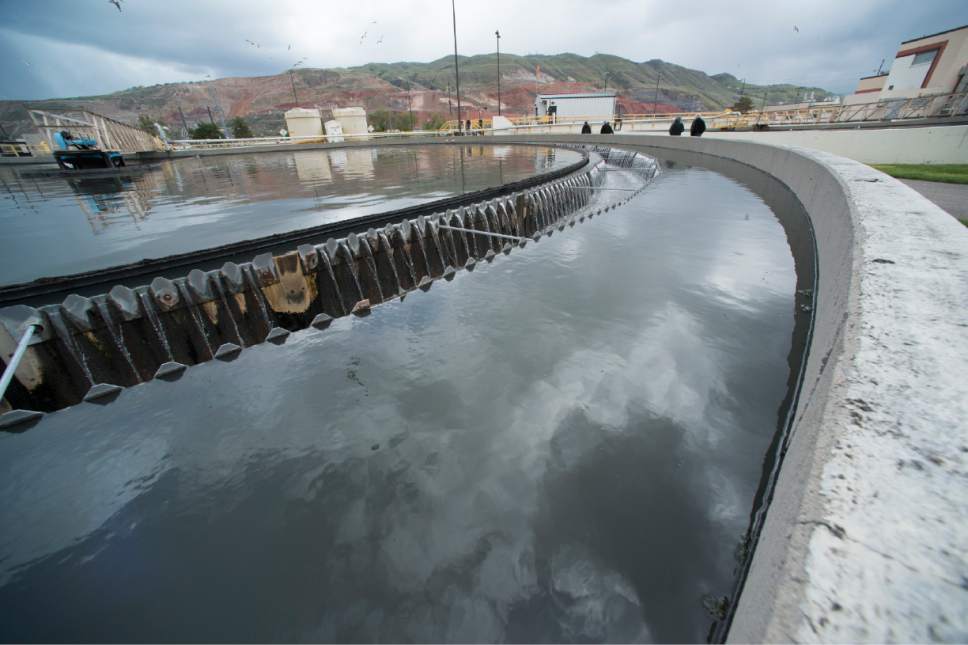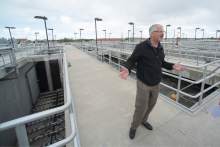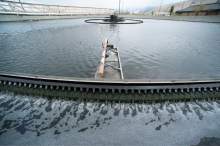This is an archived article that was published on sltrib.com in 2017, and information in the article may be outdated. It is provided only for personal research purposes and may not be reprinted.
Even though he was born and raised in Salt Lake City, engineer Giles Demke didn't know where to find the city's wastewater reclamation plant until he was hired to design an addition to it.
That was more than a decade ago. Now a full-time employee at the plant, Demke has come to take pride in being inconspicuous — "That's the way we like it," he said.
There are few happy headlines in sewage, and this one is no exception: City taxpayers would see their sewer rates, now at $16.24 monthly, jump 30 percent in the budget to be proposed Tuesday by Mayor Jackie Biskupski.
A series of planned increases that was shared with the City Council last week would see the average yearly residential sewer bill rise from $195 to $442 by 2022.
The spate of rate hikes is needed, city officials say, for a total reconstruction of the plant that will spare residents having to think about where their waste winds up for another 50 years.
The 110-acre facility sits just north of Rose Park Golf Course, set back from a security gate and obscured to the north and east by swaying reeds.
It's home to less odor and more charm than you might think.
Touring schoolchildren enjoy the "Snail Bldg.," in which tiny snail shells — sandpaper to the insides of pipes — are spat into a large plastic tub. The hardest job belongs to "bugs," or tiny microbes, that feast on the waste, and a portion of effluent is "polished" by a section of constructed wetlands before flowing 14 miles down the canal into Farmington Bay.
The facility has met relevant standards since it was built in the late-1960s, but the target is about to move.
New regulations call for wastewater to be treated for phosphorus by 2025, and city officials suspect other nutrients like ammonia and nitrogen might be next.
Salt Lake City's plant doesn't have the capability to do that, and it also could stand to be better situated for a population boom and seismic risks.
The good news for the city is that it can phase out an old process that currently takes up about half the plant's footprint — meaning it can build anew on the same grounds without interrupting an operation that must continue at all hours.
The city evaluated 21 scenarios, said Laura Briefer, director of public utilities, and ran its finalists by a panel of national experts.
The chosen option is about $100 million cheaper than retrofitting the existing plant, she said, and involves proven technologies that are industry standards.
"The approach we've taken is very thoughtful," she said.
The plan first calls for a $30 million rebuild of an influent screening building just south of the plant, at the edge of the golf course, where residents' water-bound waste meets the beginning of its end.
This is where larger debris is removed. Demke has seen hard hats, buckets, wheelbarrow tires and a rowboat, he said. Toilet paper dissolves, he noted, but your flushable wipes do not.
Next, they would build large ovens that can dry out microbe remains into a solid byproduct much more efficiently, in terms of space, than the large, open-air beds.
Ovens kill off more pathogens and nudge up the rating of Salt Lake City's byproduct, which is used as landfill. The upscale black stuff may not generate revenue, as Milwaukee does with its "Milorganite" fertilizer, but it will at least become easier to find takers.
Crucially, it also will allow builders to erect the rest of the plant — including the necessary nutrient-removal basins — over the old drying beds.
The city last fall contracted with a public engagement specialist who conducted interviews with neighbors, selling them on, among other points, reduced odor that will result from the use of organic wood bark to cultivate microbes, which in turn eat the offending sulfur.
Other proposed upgrades include a shift from chlorine to ultraviolet disinfectant — increasing energy costs but reducing the risk of spill or short supply in the case of a large earthquake.
The rebuilding cost is estimated to total $285 million over the next six years. The plant would require an additional $50 million to $100 million expansion to treat ammonia or nitrogen, Briefer said, but it would have the capability to do so.
Another $200 million is tentatively budgeted for sewage infrastructure improvements over the next two to three years.
Briefer said the current system is at capacity, and the city doesn't want to be in a position of turning down businesses because it can't meet the demand — particularly as the city seeks to develop land around the new state prison.
A city analysis of other area municipalities shows higher sewer rates than Salt Lake City's 2018 proposal ($21.12 per average residential customer each month) in South Salt Lake ($29.92), Ogden ($29.47) and Murray ($25.69), among others.
Average monthly charges are $44.66 in Reno, Nev., $36.87 in Boise and $24.95 in Denver.
Also expected in the public utilities portion of the mayor's budget: a 5 percent boost in the water fund, or a hike of $18.48 per year for the average residential customer, with future increases of about 4 percent per year expected in the four years after that.
mpiper@sltrib.com Twitter: @matthew_piper —
Proposed sewer rate increases
2018-19 • 30 percent (average residential sewer bill: $21.11 per month)
2019-20 • 15 percent ($24.28/month)
2020-21 • 15 percent ($27.92/month)
2021-22 • 10 percent ($30.71/month)
2022-23 • 20 percent ($36.85/month)


